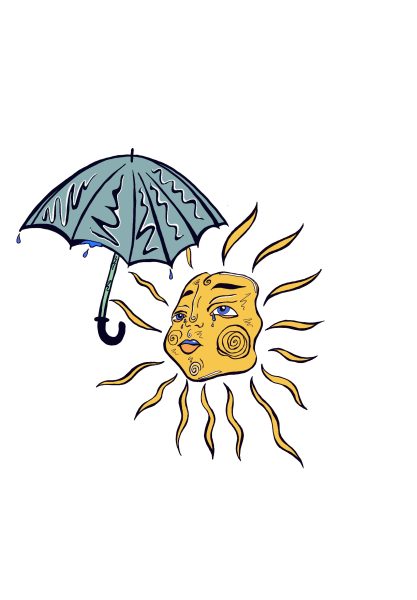On boxelder bugs
A letter in defense of the bugs in your house
April 13, 2022
In the depths of winter, I saw a spider in my bathroom. Blindly, two pale forelegs groped ahead, feeling out his next step as he spindled his way across the toothpaste-stained porcelain of my sink. I gave him little thought, and left the bathroom quickly.
A few weeks later, I saw the spider again. Those ghostly forelegs tapped curiously at the mildewing drywall above my shower. My heart rate leapt. He was an unusual looking spider–the gray-white of dead skin with mandibles darker than dried blood. There are no venomous spiders here, yet I found myself edging to the other side of the shower. My naked form felt vulnerable in the presence of his raptorial gracefulness. An instinct that I didn’t understand compelled me to keep an eye on him. He inched his way down the wall and slipped on the damp slickness of the acrylic shower panel. All eight legs splayed and flailing wildly, he fell for almost a foot before stopping to hang suspended in mid-air. Still he twisted violently–each appendage searching independently for some kind of purchase. Finding none, they all fell still.
Now only inches from my face, I looked at his motionless form–so flawless in design–and wondered what I would have done if he had fallen into the churning water below. Would I have succumbed to panic and brushed him quickly down the drain with my foot so that I could continue my shower in comfort? Or would I have bent to pick him up? Fortunately, his forethought had spared me the decision, and I watched him dance his way back up to the ceiling.
There’s something uncomfortable about finding an insect or arachnid lost in the vast expanses of a human dwelling. ‘Damn you, this is my kitchen!’ We might think, finding a wayward ant creeping across the countertop. They remind us, however subtly, that ‘inside’ doesn’t really exist–that no matter how hard we try to keep the natural world separate from our homes, it will always find its way in. Perhaps our instinct to smash bugs in the house is just a microcosm for our centuries-long ideological rejection of nature. But anyone who’s ever paused for more than a few seconds to look closely at a household invertebrate will know that they’re immensely beautiful creatures, worthy of our consideration, wonder, and respect.
It’s springtime in Minnesota, and the boxelder bugs who have been wintering in warm crevices in our walls and attics have begun their annual pilgrimage to the outdoors–hobbling their dust-covered carapaces slowly and groggily towards doors and windows. They only reproduce once outside, and will spend the summer and fall sucking juice from tender leaves and twigs. They do not bite, spread disease, or damage property–they just live quietly next to us, perfectly adapted to their conditions.
House centipedes are also on the move, becoming more active as the weather warms. Their 30 legs–which get progressively longer nearer it’s rear to prevent tangling–allow it to run sixteen inches a second. The tips of each of these legs are segmented countless times, allowing the centipede to use them like ropes to lasso prey. After a meal, house centipedes meticulously and systematically clean off each one of their legs with their ‘fangs’ in order to lubricate the delicate sensory hairs covering its body. While house centipedes can bite if distrubed, they actually help keep houses free from more destructive pests like termites.
For many, fear is an obstacle to appreciating the spectacular beauty of the bugs on their floors and walls. If you want a zero-risk way to practice, look in your windowsill. Each house has at least one dead fly nestled among the paint flakes and cracked molding. Those six legs curled lifelessly towards the heavens are part of an intricate, complex and finely crafted organic machine–the product of 250 million years of evolution. Let go of your disgust and embrace wonder.
This isn’t a call to save all bug lives. I’ve spent hours killing invasive, raspberry-devouring Japanese beetles in my garden, and the inexorable northward expansion of the Emerald Ash borer is the reason there are no more trees lining West Minnehaha Ave. Some bugs spread disease, damage crops, and disrupt ecosystems, and need to be killed. But there’s a good chance most of you rarely give them a second thought, and both you and the invertebrates deserve more than that. Next time you stamp a boxelder bug to kingdom come with the heel of your Doc Martens, take a few seconds to look at it first.
I haven’t seen the white spider (a Long-Legged Sac Spider, as it turns out) in a few weeks. Maybe one of my roommates crushed him. But I’ve done my research, and if we ever meet again, at least I’ll know his name.





